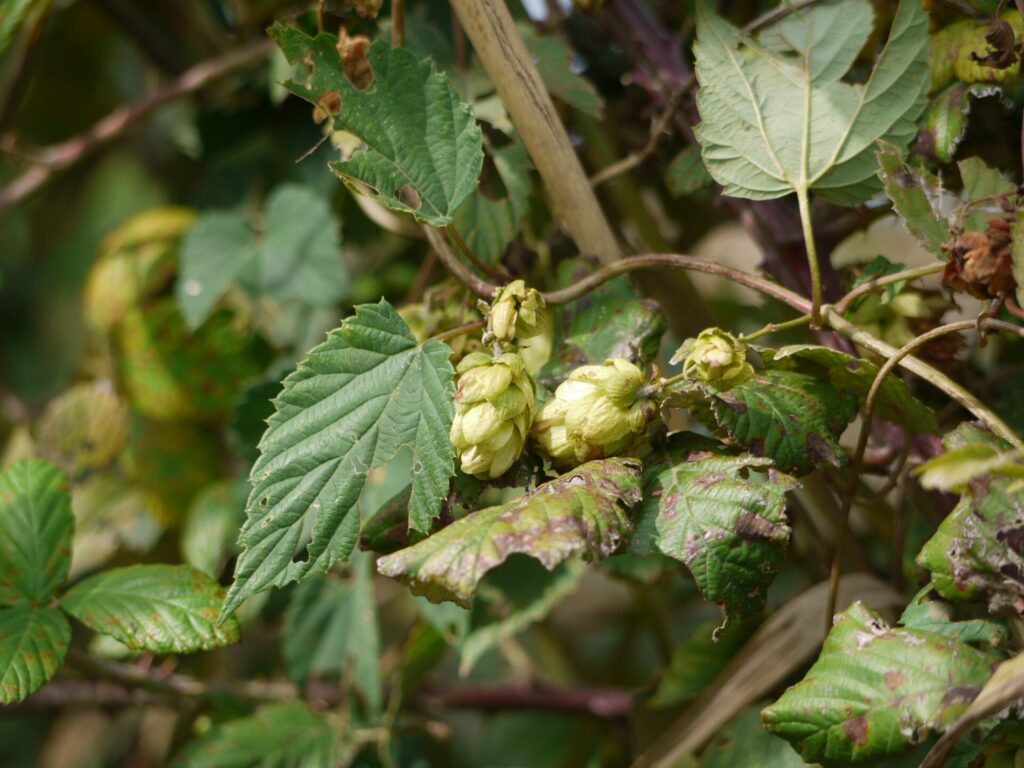Hops
Humulus lupulus L.
Cannabaceae
Hops are one of the few lianas in temperate regions that can reach 10 to 12 m in length. The plant is dioecious: with both male feet and female feet. On these latter appear ovoid cones that are very perfumed and are covered with a sticky resin called lupuline.
These cones have been used to flavor beer since the twelfth century because they bring the bitterness sought after, improve the quality of the foam and improve the preservation of the beverage.
The Latin name for this plant, humulus, comes from humus », in Latin, which indicates the rich and fresh soil much loved by the plant.
Hops cultivation has developed in Alsace and in the north of France, particularly in Flanders, a traditional land of beer, which has earned it the name “vine of the North”. The hops are grown on large poles and in autumn the stems are cut and sorted to harvest the cones before their fertilization, when they are the richest in aromas.
This culture, which has supported thousands of people, has regressed and only about thirty hectares are now still cultivated in the mountains of Flanders.
In herbalism, cones are also used to fight sleep disorders, nervousness and stress conditions. This sedative action has been known for a long time; it was also advised to hop pickers to sing so as not to fall asleep at the feet of plants!
Traditionally, hops were used to facilitate children’s sleep by slipping cones into the pillow or blanket.
Another property was discovered in part by the hop growers who saw their cycles disturbed because hop cones contain phyto-estrogens, analogous to certain female hormones. The use of hops is beneficial to the women going through menopause, as it reduces the intensity of hot flushes, improves sleep and reduces hair growth. In men, high consumption of beer causes gynecomastia (swelling of the breasts) but limits hair loss…
Because of this hormonal action, hops are contraindicated in case of mastosis, a history of breast cancer or hormone-dependent cancers.
Here is a recipe from the north of France that makes it possible to prepare a household beer, weak in alcohol content and thirst-quenching, (Still: to consume in moderation !):
Household beer
20 l d’eau
Une poignée de racine de chicorée
250 g d’orge maltée
35 g de houblon
25 g de levure
Mettre l’eau dans un grand récipient (historiquement une lessiveuse !).
Mettre dans un sac en tissu la chicorée, l’orge et le houblon ; plonger celui-ci dans l’eau et faire bouillir une demi-heure.
Laisser refroidir.
Le lendemain, ajouter la levure que vous aurez préalablement délayée dans un peu d’eau tiède. Bien mélanger la bière obtenue.
Mettre en bouteille en ajoutant une cuillère à café de sucre en poudre par bouteille.
Laisser reposer une semaine avant de consommer
